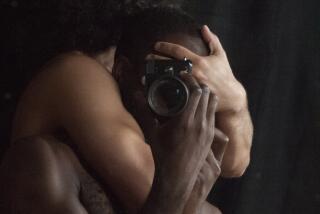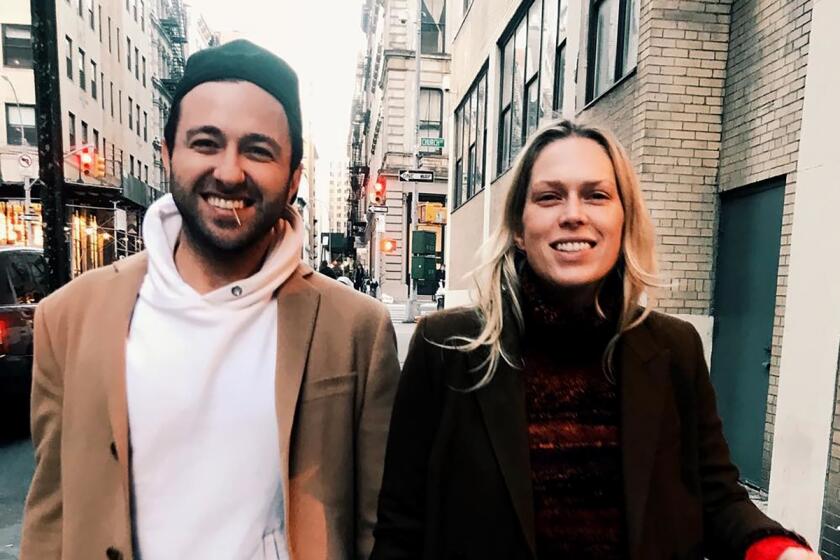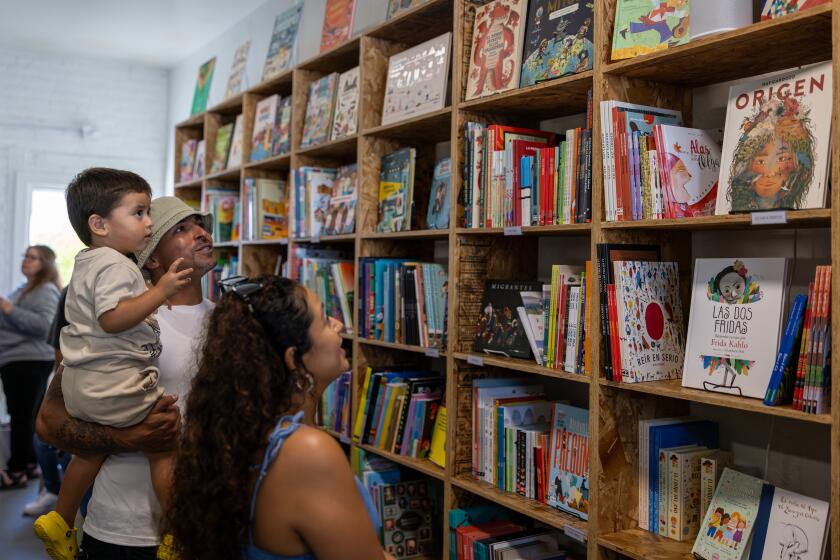‘Photography From the New China’ freezes a nation’s evolution on film
The recent history of China has been tumultuous and contentious, and Chinese art photographers have found in that a rich mine for themes and inspirations. The Getty Museum has culled eight themes for its show “Photography From the New China” (through April 24). For curator Judith Keller, it seemed the right counterbalance to the exhibition of colonial-era photographs by Felice Beato, “Felice Beato: A Photographer on the Eastern Road,” long in the planning and also up in the museum’s photo galleries. “And we just began collecting in the area of East Asian art,” she adds. About two-thirds of the 46 photographs on display belong to the Getty. She characterizes the show as “a small but impressive introduction to significant artists.”
Most of them already enjoy international careers. Zhang Huan is recognized as a pioneer of Chinese avant-garde art and has been included in many retrospectives in the U.S. and Europe. Two are featured in high-profile New York venues — Wang Qingsong’s first American solo show just opened at the International Center of Photography, and Hai Bo is showing at Pace/MacGill Gallery.
Zhang’s claim to fame was using his body in often punitive performances, which were captured in photographs. “The directness of using my own body made me feel grounded,” he replies via e-mail regarding how he began his performance art career, “and I told myself that this would be the only way for me. I need nothing more.” In a series of four photographs taken by his colleague Rong Rong in 1995, Zhang is shown through a slot in a metal box he had clambered into, shots that emphasize his compressed state. They seem to focus on the senses, as one features his staring eye, another his ear, yet another his tongue licking the side of the opening.
A well-known performance is captured in a self-portrait series called “Family Tree” from 2000. In the sequence, calligraphic words and phrases begin to appear on the upper part of his face, then over his jaw and chin, then overlapping till his lean visage and bald head are entirely covered in a glossy black. The last frame is slightly out of focus, and his eyes are open wide, presenting an unsettling image. “This work expresses my thinking on cultural identity,” he writes. “In Chinese tradition, it’s absolutely forbidden to print calligraphy on face, because face means a lot.”
Wang Qingsong has been staging increasingly elaborate scenes with costumes and sets and other people. He adapts old stories and paintings, then interweaves “current social reality” into them, he writes in an e-mail. “New Women” shows six women rather gaudily dressed up, with large flowers in their hair. For him it shows how “ladies live their lives after getting affluent with consumer goods.” Another large-format photograph shows Chinese people fussing over a bored-looking Westerner sitting in a pedicab
Change is a constant as China hurtles toward modernization, and Hai Bo and Song Yongping poignantly use the medium to show the lapse of time and its effects. Hai Bo has put together a series of then-and-now photographs, pairing vintage photographs with his own. In “Three Sisters” he has blown up a studio portrait of three sisters in their youth, all looking left and rather hopeful. In his own photo of 2000, he posed them similarly, only now two are left, looking not only older but worn, one might assume, by the upheavals of the last decades.
Song presents portraits of his mother and father, in “My Parents.” The first is of them as young adults, he in a snappy uniform, she in the standard dark jacket and slacks. Song’s photographs start in 1998, posing his elderly parents in their narrow bedroom. One shows them dressed in wedding gown and suit. Another shows only his father, seated on the bed next to a framed photograph of his deceased wife. The final shows objects strewn about the room, with no one present, and a framed photograph of his parents left among the rubble.
More to Read
The biggest entertainment stories
Get our big stories about Hollywood, film, television, music, arts, culture and more right in your inbox as soon as they publish.
You may occasionally receive promotional content from the Los Angeles Times.










